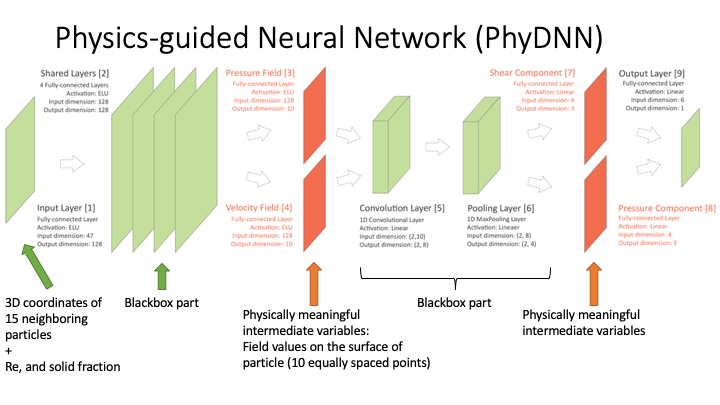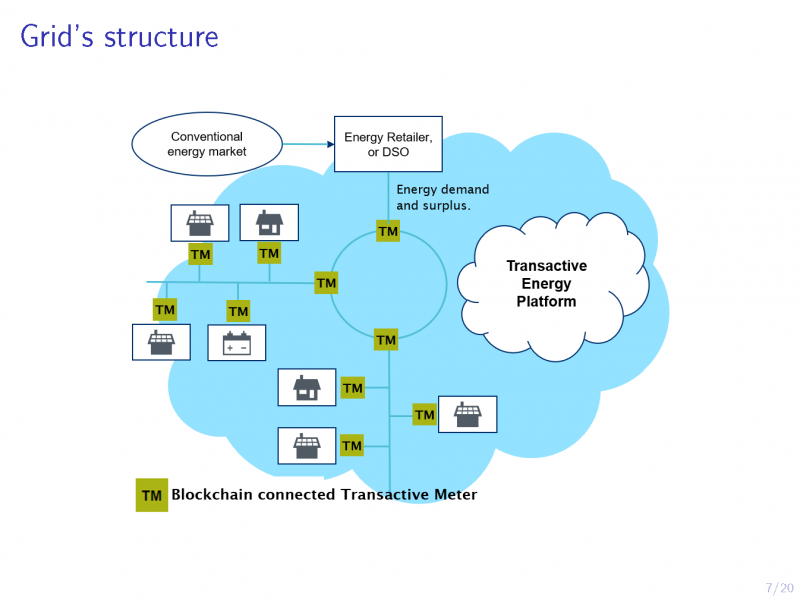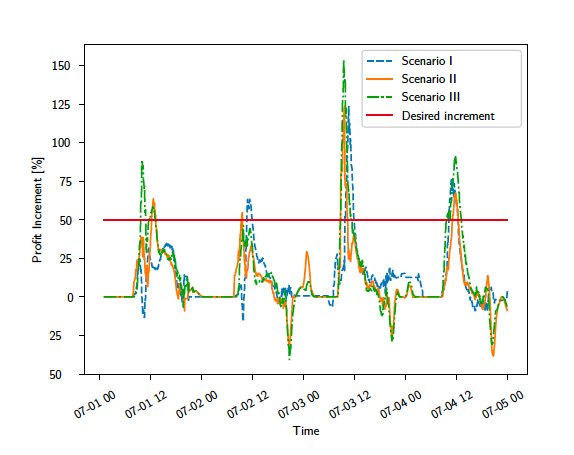 Multi-model Testbed for the Simulation-based Evaluation of Resilience (July '20)
Multi-model Testbed for the Simulation-based Evaluation of Resilience (July '20)
PI(s), Co-PI(s), Researchers:
- Peter Volgyesi (PI)
- Himanshu Neema (Co-PI)
HARD PROBLEM(S) ADDRESSED
This refers to Hard Problems, released in November 2012.
- Security Metrics Driven Evaluation, Design, Development, and Deployment
- Resilient Architectures
The goal of the Multi-model Testbed is to provide a collaborative design tool for evaluating various cyber-attack / defense strategies and their effects on the physical infrastructure. The web-based, cloud-hosted environment integrates state-of-the-art simulation engines for the different CPS domains and presents interesting research challenges as ready to use scenarios. Input data, model parameters, and simulation results are archived, versioned with a strong emphasis on repeatability and provenance.
PUBLICATIONS
KEY HIGHLIGHTS
Distributed control and consensus algorithms for CPS
In the current age of widespread cyber-attacks and known and unknown vulnerabilities in CPS, the focus is shifting toward making CPS more resilient in the presence of cyber-attacks as well as on making sure that the systems can quickly detect, isolate, mitigate, and recover from attacks. Centralized control (e.g. in the power grid domain) is still the key mechanism today for managing power supply and demand balances and power disruptions. However, centralized control mechanisms are increasingly being seen as a major source of extreme vulnerability in large safety-critical and mission-critical systems. Distributed control is a way to mitigate potential cyber-attacks by increasing the system checks, system redundancies, control mechanism ambiguity, and complexity of attacking them in an organized manner. We are currently working on evaluating two novel technologies for this purpose. First, we are trying to apply Blockchain and Smart Contract based algorithms for consensus over power transactions in order to make sure that only the intended power exchanges happen. We are further investigating the use of Hashgraphs for distributed consensus building using the power grid applications. The advantage of Hashgraphs is that the virtual voting techniques enable "efficient" consensus-building without proof-of-work, yet with fully asynchronous gossip messages among agents.
Developing use-cases for the security and resilience of railway industrial control systems
In consultation with NIST, we are working on developing a set of use-cases that captures the key vulnerabilities in geographically distributed industrial control systems such as the railway transportation systems. These systems are an extension of cyber-physical systems as they involve not only the physical and computation components but also human operators and entire systems (e.g., locomotives and maintenance crews) that are mobile in geographically large territories. As such, these systems have unique characteristics that make them even harder to study and secure in a resilient manner. The developed use-cases and associated experimentation platform description are planned to be published in an upcoming conference.
Blockchain-based Transactive Energy Systems
Experimentation with Blockchain-based Transactive Energy Systems (TES) has been an ongoing research effort [ICPS 2020], involving the design and modeling of such systems, developing a novel class of attacks against TES, analyzing the system-level effects and potential mitigation strategies. To support this work an experimentation platform has been built by integrating GridLAB-D - which simulates the power generation, distribution, and consumption aspects of the smart-grid - with TRANSAX, an in-house developed open-source framework for solving and executing market bids and contracts in a Blockchain-based decentralized energy exchange.
|
Blockchain-based Transactive Energy System - Example Model |
System-level (profit) impacts of various attacks on the TES |
Physics-guided surrogate models - FEM Simulation
One of the major areas of our past and current research is on the vulnerabilities and potential defensive technologies of machine-learning-based CPS. Highway Transportation and Electric Power Distribution are two real-world scenarios, that we used to implement various attack/defense strategies focusing on future traffic and demand prediction challenges.
In this reporting period, we started to extend this set of domains to structural health monitoring and related areas where even simulation-based data is expensive - these domains require an FEM, or other distributed modeling approach, solving partial differential equations with fine space/time resolution. Supervised machine learning - especially deep neural networks - is a promising alternative to train and use surrogate models to shortcut (some) simulation runs. Due to the scarcity of simulation results (original problem), novel ideas are suggested for model training. We are investigating physics-guided architectures and training for (1) better understanding the limits and vulnerabilities of such approach, (2) consider the integration of this surrogate modeling/simulation capability in our testbed.
- It is extremely costly and time-consuming creating a very high-fidelity FEM that can replicate the behavior of the structure it is modeled after. To some degree, it is expected that FEM will deviate from the real structure. A black-box ML model can achieve good accuracy when trained and tested with FEM results. However, a performance loss may be observed when the model is tested against the real structural responses since there is a distribution shift between FEM and the real structure due to slight modeling deviations in the FEM. Physics-guided learning focuses on reducing the mispredictions since the deep network uses intermediate variable (hidden) layers associated with mode shapes and frequencies which are universally accepted metrics for detecting and localizing the damage.
- OpenSees is simply a simulation program, while it is capable of modeling damages, it doesn't have to tools to locate damage for given responses. By building a physics-guided deep network, we want to create a machine-learning-based surrogate model that is a) capable of detecting damages, b) still abides by the rules of the physics world, and c) less susceptible to misprediction compared to a black box ML approach for previously unseen input.

- Determine a baseline FEM for a prototype structure. Here, we will focus on a 10m long cantilever beam.
- Introduce damage to the beam at various locations at various magnitude.
- Run simulations for undamaged and damaged beam structure where the input is ambient noise, i.e. white noise. Collect the resulting responses.
- Associate the responses with a label (location of damage, the magnitude of the damage).
- Create a black-box deep network model as the baseline. Test the black-box model under slight FEM modeling errors (1 to 10 percent stiffness mismatch).
- Create a physics-guided deep network (where mode shapes and frequencies are the intermediate variable layers). Test the physics-guided the model under slight FEM modeling errors
COMMUNITY ENGAGEMENTS, TECHNOLOGY TRANSFER
None, during this reporting period.
EDUCATIONAL ADVANCES:
Dr. Himanshu Neema is currently advising a group of four undergraduate students for their summer internships at our institute. Note, that these projects are built around the core technologies and know-how of the Lablet, however the summer internship program is not funded from this effort.
Networked Distribution Grid Simulator
This internship project aims to develop a networked grid simulator by integrating the GridLAB-D power distribution system simulator with OMNeT++ cyber communication network simulator. The idea is to achieve a low-level integration of the two simulators while supporting time synchronization and timed data exchange between them. It is expected that much larger computational performance can be achieved by eliminating the overhead of an integration middleware such as HLA-RTI or other co-simulation frameworks.
CPS Network Simulation with Variable Fidelity
Cyber-Physical systems are engineering systems where the functionality emerges from networked interactions among the physical and computational components. Thus for simulation based evaluation of CPS, communication network simulation is a central piece that must usually be integrated with rest of the heterogeneous simulations. In such large-scale CPS simulation based studies, the actual mechanism by which certain network effects such as cyber-attacks, or packet delays and drops, becomes less important as compared to the overall impact of such effects. For that to be simulated along with large CPS simulations, it becomes highly expensive to simulate communication networks at packet levels through all the OSI layers. At the same time, for certain effects to be simulated that is exactly is necessary. In order to balance the increased efficiency of higher-level network simulation with high-fidelity of packet-level simulation, we propose to create an architecture that allows the simulators to dynamically vary the fidelity level of the network simulation during run-time. The key research challenges that we want to address in this project are: (a) to develop, using an open-source simulation tool, a network simulation architecture that enables varying the network model's fidelity levels during run-time, (b) to maintain consistency of network data during such transitions, and (c) generate use-cases to demonstrate both the feasibility and applicability of this approach.
Local Virtual Power Plant with Transactive Energy
This project aims to evaluate whether transactive energy can provide economic benefit for developing virtual power plants (VPPs) for cities. In VPPs, communities transition from using more electricity for locally generated energy from renewable energy sources such as rooftop solar panels. However, this is highly cost prohibitive and so this project is investigating whether TE can reduce these costs.
Transactive Energy Use-Cases and Experiments
This project aims to develop models of power grid and associated transactive energy distributed energy resources using WebGME modeling environment and build several use-cases for the application of transactive energy mechanisms in demonstrating its feasibility and effectiveness in managing the power demand and supply balance in the presence of intermittent energy generation sources and varying power demands.




